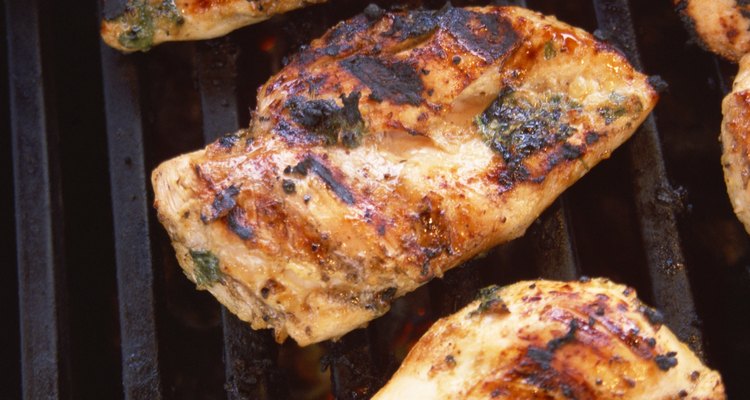
Charbroiling involves cooking meat at very high temperatures on a metal grate over a heat source. This quick method of cooking produces food with patches of dark branding corresponding to the ridges or bars of the grate. Outside the United States, charbroiling is usually called chargrilling; 'broiling' generally refers only to oven broiling.
You Look Radiant
Food that is broiled is cooked by exposure to radiant heat from a heat source. Charbroiling, however, uses radiant heat from the burner, as well as conduction heat from the metal grate or grill. Like oven broiling, charbroiling takes place at very high temperature; a typical grill, however, might reach 350 to 400 degrees Fahrenheit, and charbroiling takes place at between 550 F and 700 F. Larger professional charbroilers can reach even higher temperatures.
Divided By a Common Language
The term "charbroil" has a long history, originating in the 1950s as a combination of the words "charcoal" and "broil." For most people, however, "broiling" refers to oven broiling; this is particularly true outside the U.S. and Canada.
Why Charbroil?
Charbroiling has a lot to recommend it as a cooking method. Its high temperatures mean that food cooks quickly; a chargrilled steak will take no more than a few minutes to reach perfection. The variation in cooking temperatures on the grill means that steaks can be charred directly over high heat, and then moved to a lower-heat area to finish cooking. Charbroiling isn't only for red meat, though -- charbroiled vegetables are a great addition to a salad or side dish.
Potential Health Risks
Charbroiled meats can contain high levels of certain chemicals known to cause cancer in animals. These chemicals form when chemicals within the meat itself react to very high temperatures or when fat from the meat falls into the heat source, creating flames. Attempts to determine whether there is a significant cancer risk for humans are ongoing. There is some evidence to suggest that marinades such as red wine or beer may slightly reduce the risk.
Related Articles

Can I Put Food on a Baking Sheet for ...

How Does Infrared Cooking Work?
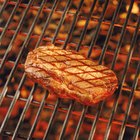
The Difference Between Grilled & ...
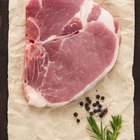
How to Cook Barbecue Boneless Pork Loin
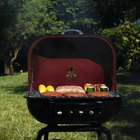
The Difference Between Grill & Griddle

Grilling Instructions for Rib-Eye Steak

Types of Steak: Rare and Medium Rare
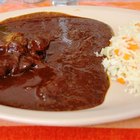
How to Make Mole Sauce

Brazilian Pepper Wood for Cooking

The Difference Between Grilled and ...

Tuna Steaks Nutrition

How to Cook Kobe Steaks

What Is a Picnic Roast?
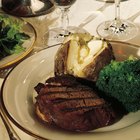
How Long to Cook a Boneless Chuck Eye ...

How to Use an Indoor Electric Grill
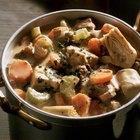
Does Cooking at a Low Temperature for a ...

How to Broil Filet Mignon Wrapped in ...

How Long to Cook Steak at 150 Degrees ...
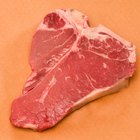
How to Broil Strip Steak
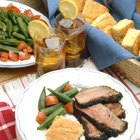
How to Cook London Broil
References
- Enyclopaedia Britannica: Broiling
- Foodservice Equipment and Supplies: Broilers
- Char-Broil: About Char-Broil
- BBC: Chargrilled Steak with Beer, Mustard and Watercress Salad
- Epicurious: Pan-Grilled Steak
- BBC: Chargrilled Courgette with Basil, Mint, Chilli and Lemon
- National Cancer Institute: Chemicals in Meat Cooked at High Temperatures and Cancer Risk
- BBC: Marinating "May Cut Cancer Risk"
Writer Bio
Dr James Holloway has been writing about games, geek culture and whisky since 1995. A former editor of "Archaeological Review from Cambridge," he has also written for Fortean Times, Fantasy Flight Games and The Unspeakable Oath. A graduate of Cambridge University, Holloway runs the blog Gonzo History Gaming.
Photo Credits
Jupiterimages/liquidlibrary/Getty Images